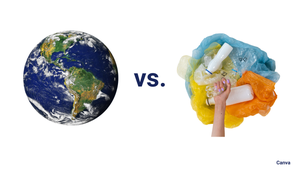Necessity, once again, has proven itself to be the mother of invention, with 3D printing playing the role of enabler. Marathon runner Maximilian Peter, who works as an engineer at Wacker Silicones (Munich, Germany), longed for an athletic shoe with shock-absorbing insoles and a perfect fit. Holding a doctorate in chemical engineering and through his daily activities at Wacker, he quickly identified the best material for this application, silicone, and the appropriate manufacturing process, 3D printing.
August 12, 2015
Necessity, once again, has proven itself to be the mother of invention, with 3D printing playing the role of enabler. Marathon runner Maximilian Peter, who works as an engineer at Wacker Silicones (Munich, Germany), longed for an athletic shoe with shock-absorbing insoles and a perfect fit. Holding a doctorate in chemical engineering and through his daily activities at Wacker, he quickly identified the best material for this application, silicone, and the appropriate manufacturing process, 3D printing. Just one problem: Silicone parts can only be injection molded, a prohibitively expensive process for custom products, and no suitable 3D printing materials were available. The solution? A novel silicone formulation and a new approach to the 3D printing process, which Wacker described in its Interim Report for January to June 2015.
![]() Peter brainstormed with engineers at Ingenieure GmbH, a product development and prototyping bureau in Ergolding, Germany, to find a way to 3D print using silicone. "Until now, it has been impossible to print with elastomers. No suitable processes were available," Peter is quoted as saying in the report. Within about a year, however, the group had developed an additive process that would work with silicone, which can't be melted and shaped into a final product the way that thermoplastics and metals can.
Peter brainstormed with engineers at Ingenieure GmbH, a product development and prototyping bureau in Ergolding, Germany, to find a way to 3D print using silicone. "Until now, it has been impossible to print with elastomers. No suitable processes were available," Peter is quoted as saying in the report. Within about a year, however, the group had developed an additive process that would work with silicone, which can't be melted and shaped into a final product the way that thermoplastics and metals can.
The 3D printer they created uses a glass printing bed and employs a robot that runs on a custom program. The printing head, controlled by the robot, pauses after depositing silicone droplets so that a UV beam can pass over the material and crosslink the molecules into an elastomer. Once vulcanization is complete—it takes less than one second—the cycle is repeated. Ultimately, they hope to develop a system that can process 100 grams of silicone per hour.
The system produces extremely precise contours in silicone strips that are about 0.6 mm wide and half as thick, says Wacker. The finish is exceptionally smooth, the company adds, significantly smoother than 3D-printed thermoplastics. Peter and his team claim that the finished item looks almost as if it were injection molded, and for that, they credit silicone developer Ernst Selbertinger.
Selbertinger created a silicone formulation that can be dosed as tiny droplets that stay where they are put. He likens the material to toothpaste: "It flows under pressure, as you squeeze it from the tube, but sits firmly on the toothbrush," explains Selbertinger. He won't disclose much else about the formulation, other than to say that it contains a platinum catalyst to enable crosslinking under UV light.
Wacker anticipates far-reaching applications for the technology in the automotive and medical sectors, in particular. Instead of keeping an inventory of spare silicone parts for cars, they can be printed on an as-needed basis, for example. In hospitals and clinics, implants could be custom printed, even during an operation, based on data provided by magnetic resonance imaging machines.
Respiratory masks, hearing aids and eyeglass nose pads (that actually fit the wearer's nose!) are other products where the mass customization potential of silicone 3D printing has enormous potential, notes Wacker.
And let's not forget the best running shoes ever.
About the Author(s)
You May Also Like




